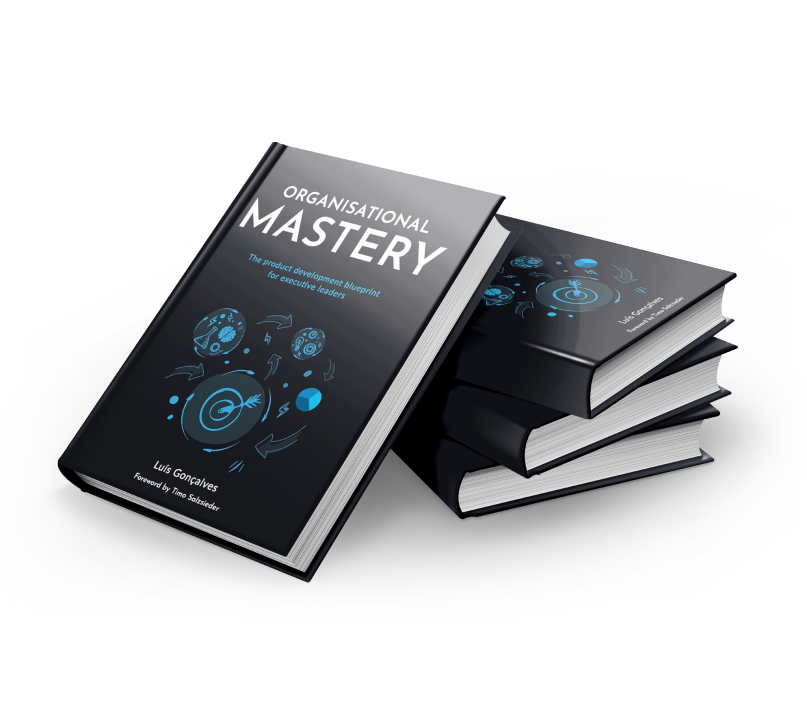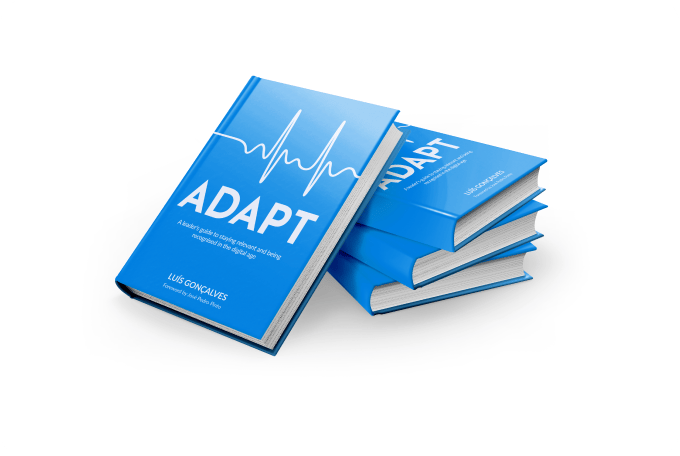Share this
Understanding Problem Space vs. Solution Space
by Luis Gonçalves on Jun 30, 2024 2:00:50 AM

In the dynamic field of product development, creating successful products that truly meet user needs is a complex challenge. One effective framework that helps navigate this challenge is the distinction between Problem Space and Solution Space. This framework is essential for ensuring that product teams focus on the right problems before jumping into developing solutions.
By thoroughly understanding the problem, teams can create solutions that are not only innovative but also effectively address user needs. This blog post delves into the concepts of Problem Space and Solution Space, explores their significance in product development, and explains why this framework is integral to the Product Pillar in the ADAPT Methodology®.
Introduction to Problem Space vs. Solution Space
The concepts of Problem Space and Solution Space are rooted in design thinking and are widely used in product management to ensure a structured approach to product development. The Problem Space involves identifying, understanding, and defining the problem that needs to be solved, while the Solution Space focuses on generating, developing, and testing solutions to address the identified problem. Distinguishing between these two spaces helps teams avoid the common pitfall of jumping to solutions without fully understanding the underlying issues.
The Problem Space
Definition
The Problem Space is the initial phase of product development where the focus is on understanding the problem. This phase involves extensive research and analysis to identify the root causes of user pain points and needs. It is about asking the right questions and gathering insights to define the problem accurately.
Key Activities
-
Research and Discovery:
- Conducting user research, market analysis, and competitive analysis to gather a comprehensive understanding of the context.
- Methods include surveys, interviews, ethnographic studies, and data analysis.
-
Problem Definition:
- Clearly articulating the problem statement based on the insights gathered.
- This involves defining the scope of the problem, its impact on users, and the desired outcomes.
-
User Personas:
- Creating detailed profiles of the target users, including their demographics, behaviors, needs, and pain points.
- Personas help in visualizing the end-users and keeping the development process user-centered.
-
Journey Mapping:
- Visualizing the user’s journey to identify pain points and areas of opportunity.
- This involves mapping out the steps users take to achieve their goals and the challenges they face along the way.
Goal
The primary goal of the Problem Space is to develop a deep understanding of the problem from the user's perspective. This phase ensures that the team is addressing the right problem and not just symptoms of a deeper issue. By thoroughly exploring the problem space, teams can avoid costly mistakes and ensure that their solutions are relevant and effective.
The Solution Space
Definition
The Solution Space is the phase where the focus shifts to generating, developing, and testing solutions to address the identified problem. This phase involves creativity and innovation to come up with potential solutions and then refining these solutions based on feedback and testing.
Key Activities
-
Brainstorming and Ideation:
- Generating a wide range of ideas and potential solutions.
- Techniques such as brainstorming sessions, mind mapping, and sketching are used to foster creativity.
-
Prototyping:
- Creating low-fidelity and high-fidelity prototypes to visualize and test solutions.
- Prototypes can range from simple sketches to detailed interactive models.
-
Testing and Validation:
- Conducting user testing and gathering feedback to validate solutions.
- Methods include usability testing, A/B testing, and pilot programs.
-
Iteration:
- Continuously improving the solutions based on user feedback and testing results.
- This involves refining prototypes, addressing identified issues, and enhancing features to better meet user needs.
Goal
The primary goal of the Solution Space is to develop effective solutions that directly address the problem defined in the Problem Space. This phase is about applying creativity and innovation to create products that are not only functional but also delightful for users. By iterating on prototypes and incorporating user feedback, teams can ensure that their solutions are viable, feasible, and desirable.
Importance of Distinguishing Between Problem Space and Solution Space
-
Avoids Premature Solutions:
- Ensures that the team does not jump to conclusions or develop solutions before fully understanding the problem.
- This reduces the risk of building products that do not adequately address user needs.
-
Focuses on User Needs:
- Keeps the focus on the user’s actual needs and problems, leading to more user-centered solutions.
- This increases the likelihood of creating products that resonate with users and solve real problems.
-
Encourages Innovation:
- Allows for a broader exploration of potential solutions, fostering creativity and innovation.
- Teams can explore multiple avenues before settling on the best solution.
-
Improves Problem-Solving:
- Leads to better problem-solving as it ensures a thorough understanding of the problem before moving to solution development.
- This structured approach enhances the quality and effectiveness of the solutions.
Integrating Problem Space and Solution Space into the ADAPT Methodology®
The ADAPT Methodology® is a comprehensive framework designed to help organizations transform their product development processes and achieve long-term success. One of its core pillars is the Product Pillar, which focuses on developing winning product strategies, viable business models, and products that meet market needs. Distinguishing between Problem Space and Solution Space is crucial in this pillar to ensure that products are built based on solid understanding and innovative solutions.
Problem Space in ADAPT Methodology®
During the Problem Space phase, the focus is on understanding market needs and user pain points. This aligns with the ADAPT pillars of Approach and Data, ensuring that products are built on a foundation of thorough research and insights. By investing time in the Problem Space, companies can accurately define the problems they need to solve, which guides the subsequent development phases.
Solution Space in ADAPT Methodology®
In the Solution Space, the focus shifts to the Product and Agility pillars. Here, teams ideate, prototype, and test solutions to ensure they effectively address the identified problems. The iterative nature of the Solution Space aligns with the continuous improvement ethos of the ADAPT Methodology®, ensuring that products are constantly refined based on user feedback and testing results.
By integrating the Problem Space and Solution Space framework into the ADAPT Methodology®, companies can ensure that their product development efforts are user-centered and innovative. This structured approach not only helps in building successful digital product companies but also ensures that these companies can scale with speed and simplicity.
Conclusion
Understanding and distinguishing between Problem Space and Solution Space is essential for any company looking to develop successful products. By thoroughly exploring the Problem Space, teams can ensure they are addressing the right problems, while the Solution Space allows for creative and innovative solutions to be developed and refined.
Incorporating this framework into the Product Pillar of the ADAPT Methodology® ensures that companies have a clear and structured approach to product development. This alignment not only helps in creating products that meet market demands but also ensures that these products can scale effectively and efficiently.
Whether you are a startup founder or an established business leader, mastering the Problem Space and Solution Space framework is a must for achieving product excellence and staying ahead of the competition.
Share this
- Agile Methodologies (18)
- Product Strategy (18)
- OKRs (16)
- Scrum (16)
- Product Mindset (14)
- Project To Product (10)
- Agile Retrospectives (9)
- CoPs (9)
- Knowledge Sharing (9)
- Time To Market (8)
- Product Discovery (7)
- Continuous Improvement (5)
- Strategy (5)
- Scrum Master (4)
- Content Marketing Strategy (3)
- Product Owner (3)
- Technical Excellency (3)
- Digital Transformation (2)
- Innovation (2)
- Scaling (2)
- Team Building (2)
- Business Model (1)
- Cost Of Delay (1)
- Customer Feedback (1)
- Customer Journey (1)
- Customer Personas (1)
- Design Thinking (1)
- Digital Leadership (1)
- Digital Product Tools (1)
- Go To Market Strategy (1)
- Google Design Sprint (1)
- Lean Budgeting (1)
- Lean Change Management (1)
- Market Solution Fit (1)
- Organisational Impediments (1)
- Outsourcing (1)
- Product (1)
- Product Metrics (1)
- Product Roadmaps (1)

Organisational Mastery
Get your free copy

ADAPT
Get your free copy

Product First
Get your free copy
